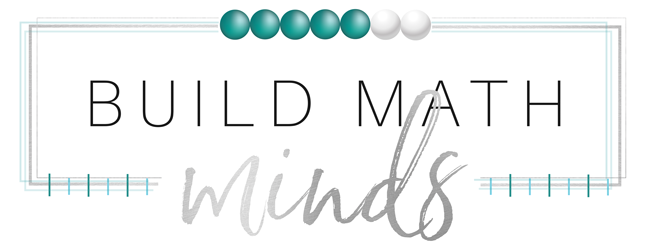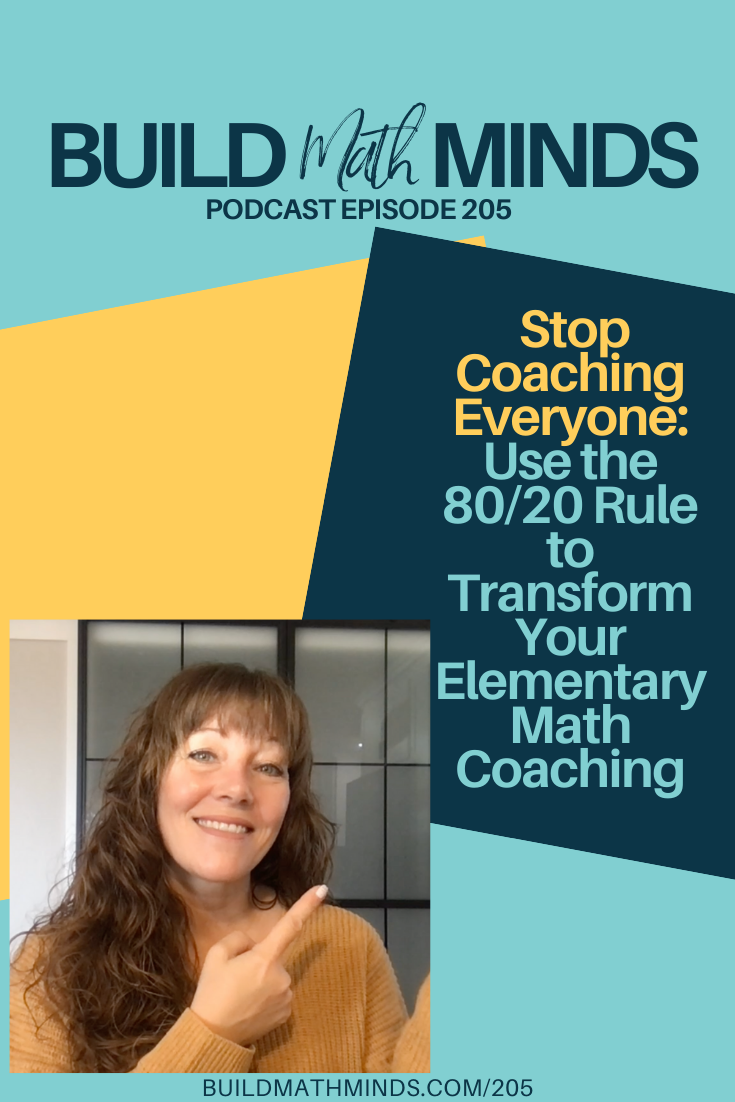Welcome fellow Recovering Traditionalists to Episode 205: Stop Coaching Everyone: Use the 80/20 Rule to Transform Your Elementary Math Coaching
As an elementary math coach, how many times have you felt like you’re trying to be everywhere at once? You’ve got 50 teachers who could all use support, a list of coaching goals as long as your arm, and never enough time to make the impact you really want to make.
Well, today I want to share something that can change how you approach your coaching – and it’s going to save you time while actually increasing your impact. It’s called the 80/20 principle, and once you understand how to apply it to your coaching, you’re going to wonder why you were trying to do everything for everyone.
So first, what is the 80/20 rule? It was first noticed by Vilfredo Pareto when he observed that 80% of his peas came from just 20% of his pea pods (and just so you know there is other versions of what Pareto found but the pea pod example is the most commonly used one). Since then, this principle has been found everywhere – Microsoft discovered that 80% of their tech issues come from just 20% of the bugs in their software. So instead of trying to fix every single bug, they focus on that crucial 20%.
The idea is simple: if we can focus on the things that will produce the most results, that’s a much better use of our time than trying to focus on everything. In coaching, this means identifying what Dr. Joseph Juran called “the vital few” instead of getting caught up in “the trivial many.”
Let’s be honest about what we’re facing as math coaches. Look at everything on your plate – you’ve got teachers at different experience levels, different comfort zones with math, different willingness to change. You’ve got curriculum implementation, assessment support, lesson planning help, classroom management issues, and on and on.
And here’s the thing – you probably feel like you need to help every teacher with every possible area of growth. But if we try to focus on everything, what tends to happen is that it’s all just surface level and no one gets the deep support they really need to transform their practice.
So here’s where the 80/20 principle becomes game-changing for your coaching. First, let’s talk about which teachers to prioritize, because reality is you can’t coach them all in a deep & powerful way.
Now, I know what some of you might be thinking – “Isn’t this playing favorites? Shouldn’t I help everyone equally?” Here’s the thing: strategic prioritization isn’t about playing favorites or neglecting struggling teachers. It’s about being smart with your limited time to create the biggest positive impact across your entire school.
When you focus your intensive coaching on that 20% of teachers who will make the biggest change and influence others, you’re actually creating a ripple effect that reaches way more students than if you spread yourself thin across everyone.
So how do you identify that crucial 20%? Look for two key characteristics:
First, eagerness to learn and change. These are the teachers who ask questions, who say “yes” when you suggest trying something new, who reflect on their practice. They might not be your strongest teachers yet, but they have that growth mindset.
Second, and this is huge – look for the teachers who are seen as leaders by their colleagues. These are the ones other teachers go to for advice. They speak up constructively in team meetings. When they try something new, others notice and want to know more about it.
You can spot these teacher leaders by observing who gets approached for help during planning time, who others reference positively in conversations, and who naturally influences the culture and practices around them.
Now, the second way to apply 80/20 is in deciding what to coach on. Just like with addition and multiplication facts, there are certain foundational items that carry way more weight than others.
Your 20% – your vital few coaching topics – should be foundational instructional moves that will last the test of time. Things like helping teachers understand the power of number routines and how to implement them, getting students talking more about their mathematical thinking, helping teachers learn how to facilitate learning as students solve open-ended problems, and asking the right questions to truly understand what students are thinking.
These are just a few examples of moves that will serve teachers no matter what curriculum comes and goes, no matter what grade they teach next year. When you help a teacher get really good at facilitating mathematical discourse, that skill transfers to every single lesson they teach from here on out.
Compare that to what I often see coaches spending time on – and I’ve done this myself – helping teachers evaluate their textbook to ensure they’re covering all the content standards. Now, that might feel important at the moment, but here’s the problem: in a few years when they adopt a new curriculum, you’ll have to do that same work all over again with that same teacher.
But when you coach on those foundational moves – how to ask questions that reveal student thinking, how to build number sense through routines, how to create a classroom culture where mistakes are learning opportunities – that coaching keeps paying dividends year after year.
Here’s the beautiful thing about applying 80/20 to your coaching – it actually saves you time in the long run. When you focus on developing teachers’ deep understanding of mathematics and those foundational instructional moves, you’re building their capacity to make good decisions on their own.
Instead of being the person they come to for every little curriculum question or lesson planning dilemma, you’ve equipped them to evaluate and improve their own practice. The coaching you do today won’t have to be redone in a few years because you’ve focused on what truly matters and what truly lasts.
So here’s what I want you to do after watching this video. Make two lists:
First, list all the teachers you could potentially work with this year. Now identify the 20% who show eagerness to learn and who have influence with their colleagues. These become your priority teachers – the ones where you invest your most intensive coaching time. This doesn’t mean you ignore everyone else, but you’re strategic about where you put your deepest energy.
Second, write down all the topics you’re currently coaching teachers on or planning to coach on. Look at each item and ask yourself: “Is this a foundational instructional move that will serve this teacher for years to come, or is this something that’s specific to this moment, this curriculum, this particular situation?”
Focus your coaching conversations on that vital 20% that will have lasting impact, and watch how much more effective and sustainable your coaching becomes.
The goal isn’t to do more coaching – it’s to do coaching that matters more.
Until next week, my fellow Recovering Traditionalists, keep letting your students explore math, keep questioning, and most importantly, keep Building Math Minds.




